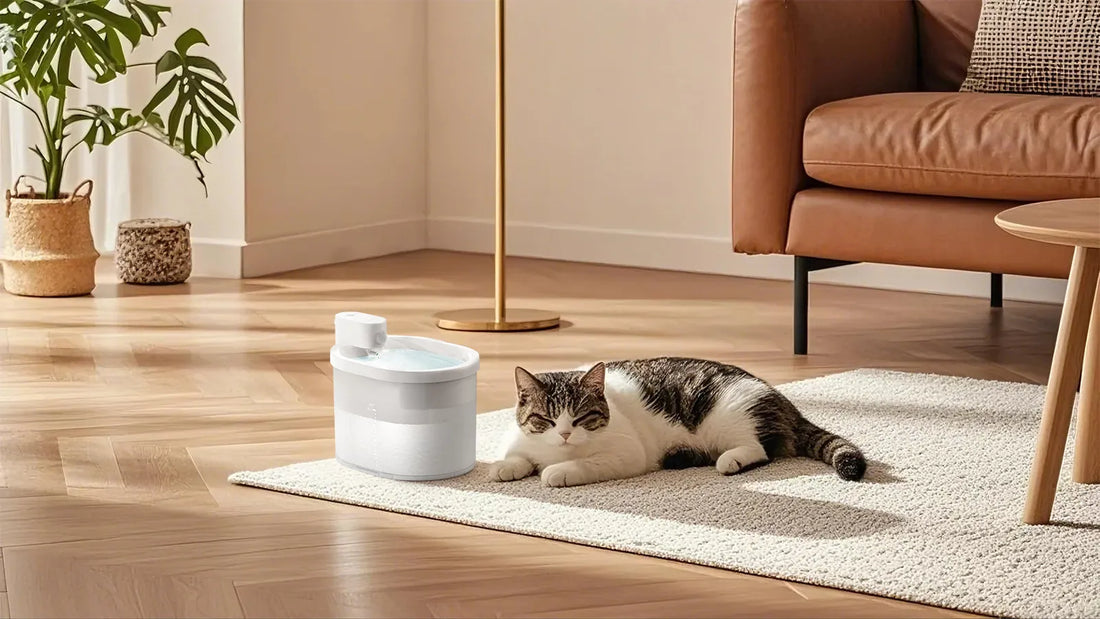If you’ve noticed your cat drinking a lot of water lately, it’s natural to feel concerned. While increased thirst can be a sign of something harmless, it can also indicate underlying health issues. Understanding the reasons behind this behavior is crucial for ensuring your feline friend’s well-being. This article explores the potential causes, when to seek veterinary advice, and how to monitor your cat’s hydration effectively.
Why Is My Cat Drinking More Water Than Usual?
Cats are naturally less inclined to drink large amounts of water compared to other animals. Their ancestors evolved in arid environments, obtaining most of their hydration from prey. However, modern domestic cats may drink more water for various reasons. Some of these are harmless, while others may require medical attention.
Common Causes of Increased Thirst in Cats
There are several reasons why your cat might be drinking more water than usual. Here are some of the most common causes:
- Dietary Changes: If you’ve recently switched your cat’s food from wet to dry, they may need to drink more water to compensate for the lack of moisture in their diet.
- Hot Weather: Just like humans, cats may drink more water during warmer months to stay hydrated.
- Increased Activity: A more active cat may require additional water to replenish lost fluids.
- Medications: Certain medications can cause increased thirst as a side effect.
When Increased Thirst Signals a Health Problem
While some causes of increased water intake are benign, others may indicate a more serious health issue. Here are some conditions that could be behind your cat’s excessive thirst:
- Diabetes: Cats with diabetes often drink more water as their bodies try to flush out excess glucose.
- Kidney Disease: Chronic kidney disease is a common condition in older cats and can lead to increased thirst.
- Hyperthyroidism: An overactive thyroid can cause excessive thirst and urination.
- Urinary Tract Infections: These infections can lead to increased water consumption as your cat tries to flush out bacteria.
How to Monitor Your Cat’s Water Intake
If you suspect your cat is drinking more water than usual, it’s important to monitor their behavior closely. Here are some tips to help you keep track:
- Measure Water: Use a measuring cup to track how much water your cat drinks each day.
- Observe Behavior: Pay attention to how often your cat visits the water bowl and how much they drink at each visit.
- Check for Other Symptoms: Look for signs such as weight loss, lethargy, or changes in appetite, which could indicate an underlying issue.
When to Consult a Veterinarian
If your cat’s increased thirst persists for more than a few days or is accompanied by other symptoms, it’s time to consult a veterinarian. Early detection and treatment can make a significant difference in managing potential health problems. Your vet may perform blood tests, urine analysis, or other diagnostic procedures to determine the cause of your cat’s excessive thirst.
Preventing Dehydration in Cats
Ensuring your cat stays hydrated is essential for their overall health. Here are some ways to encourage proper hydration:
- Provide Fresh Water: Always ensure your cat has access to clean, fresh water.
- Use Water Fountains: Some cats prefer running water, and a fountain can encourage them to drink more.
- Incorporate Wet Food: Wet food contains more moisture than dry food and can help keep your cat hydrated.
Understanding Your Cat’s Hydration Needs
Every cat is unique, and their hydration needs can vary based on factors such as age, weight, and activity level. By understanding these needs and monitoring your cat’s behavior, you can ensure they stay healthy and hydrated. Remember, while increased thirst can be a normal response to certain conditions, it’s always better to err on the side of caution and seek professional advice if you’re concerned.
Your cat’s health is a priority, and noticing changes in their behavior, such as drinking a lot of water, is the first step in ensuring they receive the care they need. Stay vigilant, provide a nurturing environment, and don’t hesitate to consult your vet if something seems off. Your feline companion relies on you to keep them happy and healthy, and understanding their needs is key to achieving that goal.













